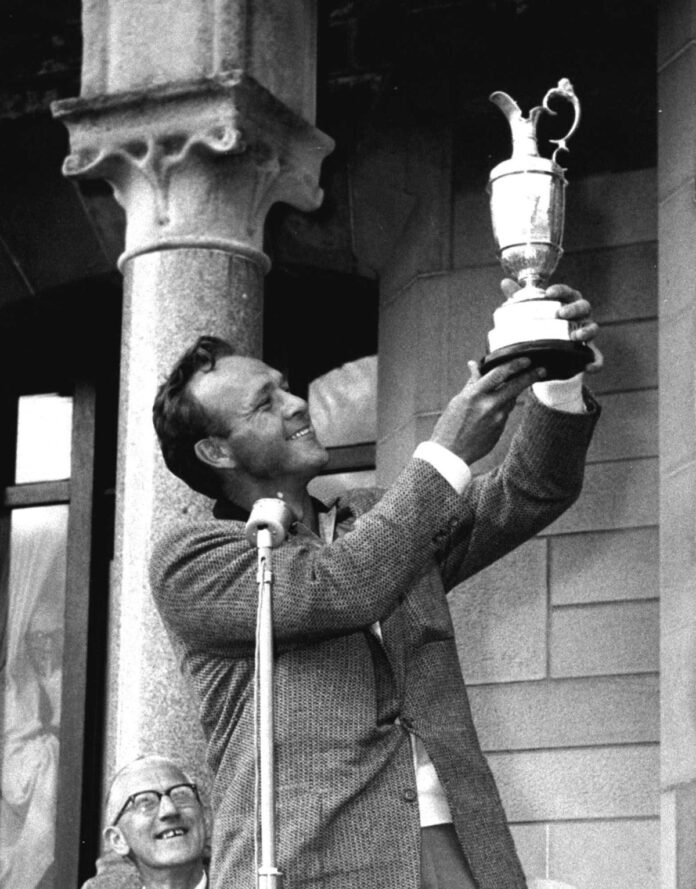
Clive Clark remembers watching Arnold Palmer with his powerful forearms and lashing swing reaching long par-4s and even par-5s in two shots at Royal Troon, a course where Palmer won the 1962 British Open.
“I remember him ripping irons onto I think the par-5 sixth,” said Clark, at the time still a few years away from joining what was called the English Tour. “Nobody else was getting up with a driver and an iron. He was the big hitter of that era until (Jack) Nicklaus came along.”
Clark, a La Quinta resident and golf course designer, was a long-time player on the DP World Tour and a commentator of golf broadcasts for two decades for the BBC. Clark believes the power game Palmer used in that 1962 win, Palmer’s second consecutive British Open title, could be a key to the British Open played at Troon as the event heads into the weekend.


Gallerites watch Arnold Palmer hit an iron shot on the 11th hole at Troon, Scotland, July 11, 1962, in opening round of the British Open Golf Championship.
“So much depends on which way the wind is blowing,” Clark said. “You can be going out downwind and everything seems to be a drive and a short iron or a wedge, and you come back and the wind is the other way and every hole feels like it is a drive and a 3-iron. The wind plays a big part in the Open. And it can change, both in direction and velocity.”
Clark said for fans not familiar with many of the British Open courses, Troon might look much like the other courses in the rotation.
“With the exceptions of the Old Course (at St. Andrews), they are somewhat similar in respect that they generally start growing the rough as opposed to trimming it down,” Clark said. “It is not like American rough. It is generally fescue.”
There are distinct holes on Troon, Clark added, starting with perhaps the most famous hole on the layout, the par-3 eighth hole known as The Postage Stamp.
“It is an intriguing little hole, just over 120 yards,” Clark said. “But you can play ping-pong between one bunker and the other around the green. It’s a great hole.”
Another key hole will be the 483-yard par-4 11th hole, known as The Railway.
“The 11th can be a frightening hole. People have come to grieve on that,” Clark said. “It has a railway line all the way down the right. It’s a long par-4 with a lot of gorse. Your drive over is quite a carry over the gorse there.”
Troon is hosting its 10th Open Championship this week, the last being in 2010 when Sweden’s Henrik Stenson won a final-round duel with Phil Mickelson. But in the previous six Opens at the course before Stenson’s win, dating back to Palmer’s 1962 victory, Americans were the winner each time.


Golf course designer Clive Clark at the Hideaway in La Quinta, June 30, 2017. (Jay Calderone/USA Today Network)
Clark, whose best finish in the Open Championship came with a tie for third in 1967, said it depends in part on how players adapt to the demanding British Open conditions and course setup.
“I remember one of the first Opens I played in was the 1966 Open that Jack (Nicklaus) won at Muirfield,” Clark smiled. “I remember in his winning speech, I don’t know how the members took it, but Jack said I’d like to thank all of you members for giving up your hayfield for the week.”







